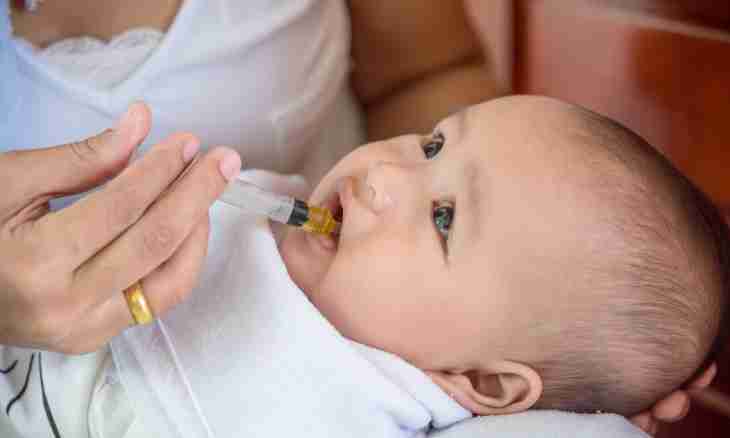Vitamin D is given to children of the first year of life for prevention of rickets. Besides, vitamin D participates in a metabolism, is important for the correct work of nervous system, promotes increase in immunity. The dosage depends on a condition of the child and features of food, is appointed the local pediatrician after survey of the child.
The modern pediatrics recommends to use water solution of D3 vitamin – cholecalciferol, it is less toxic, harmless to a liver, at accidental acceptance of a big dosage inside is quickly brought out of an organism as it is not capable to collect in fabrics unlike oil solution of ergocalciferol. It is important that in the first year of life the child had no deficiency in vitamin D. Even minor deficit which does not affect a bone tissue can affect health further. Adults who did not receive vitamin D in the childhood are more subject to development of autoimmune diseases, to a thicket diagnose oncological processes, diseases of connecting fabric for them.
To healthy full-term children D3 vitamin begins to be given about 4 weeks of life on 400ME in day if the child lives in adverse conditions, is premature or was born with a small weight, then D3 vitamin can be appointed earlier – from second or first week of life. If the child was born in the summer, mom regularly walks with him, then the dose of D3 vitamin can be reduced, the pediatrician can recommend to give medicine only in cloudy days and in days without walks. During the autumn and winter period all children of the first year of life have to receive a preventive dose – 400-500 ME.
If sunblock cream is applied to skin of the child, it is necessary to give D3 vitamin as sunshine do not get into skin and own vitamin D is not synthesized.
Children who are on the artificial and mixed feeding receive D3 vitamin from children's mix. If day intake of vitamin is not enough, then appoint necessary amount of medicine. It is important that with increase in volume of mix, also the amount of D3 vitamin which comes to the child's organism increases. Mom needs to approach calculation of a dose that there was no chronic overdose attentively.
It is necessary to store medicine in the cool place protected from light. Under the influence of sunshine, cholecalciferol collapses.
One drop of D3 vitamin contains from 400 to 500 ME, that is daily mom has to give to the child a medicine drop. Some bottles already have the pipette that facilitates a task. Vitamin has sweet taste therefore there are no difficulties – children with pleasure take medicine. To mix with drink, mix or with breast milk medicine it is not necessary. It is better to give medicine in the first half of day in 30-0 minutes after a meal. Medical doses are appointed by the doctor, only after diagnostics. Schemes of treatment depend on degree of expressiveness of changes of a bone tissue, specific features of the child and mother's spirit. Sometimes medicine is prescribed in high doses, but a short-term course, in other cases the long reception of medium-to-high doses will be more appropriate. It is worth remembering that reception of preventive doses is safe for the child's organism whereas high medical doses can worsen work of a liver. If the child receives D3 vitamin daily or with rare admissions within the first year of life, then the probability of development of rickets is extremely small. There are contradictory data that front breast milk contains vitamin D in the quantity, necessary for the child, however a large number of children sick with rickets on breastfeeding confirm that the child needs additional amount of vitamin D.

